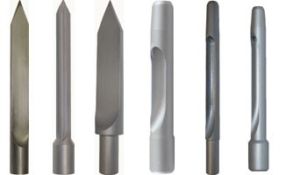Our Greens Maintenance Advisor, Alan Lewis, is sharing his ten best tips for winter aeration and the types of tines you should be using on your green.
After the end of season renovation, I often hear the saying `we have put the green to bed’ sorry this is a myth, there are a number of operations that need to take place during the autumn and winter weather permitting.
Aeration is one of the most important maintenance tasks carried out on turf.
Aeration means to get air into something. In turf it is simply the production of holes through the turf surface into the underlying rootzone (soil) to allow gases (oxygen etc.) in and out of the soil and for water, to relieve soil compaction and improve grass roots through the soil.
Ten reasons for aeration
- It allows air into the soil (turf grasses need oxygen for respiration).
- To improve the drainage of the turf surface and underlying material. This improves the playing surface and helps avoid soil compaction (wet soils are more easily compacted).
- To help in the control or reduction of thatch in the turf. The use of hollow tines is suited to this role as a plug of thatch is physically removed during the aeration process. But new deep scarification is now replacing this for that removal.
- To alleviate soil compaction. Compaction reduces drainage, root growth and resistance to
drought as well as creating a hard playing surface. It is caused by compression of the soil particles by the movement of players and machines across the turf surface. - To encourage root growth. If done at the correct time of the year (spring being the best time) the slicing of the turf roots stimulates the turf grass to produce new root material increasing its mass and depth. The holes left by aeration also offer an easy route for the turf grass roots to progress downwards into the soil.
- To increase oxygen levels in the soil, this in turn stimulates soil bacteria, which are vital to soil health. Bacteria in the soil break down fertilisers for plant growth as well as breaking down organic matter (thatch). It is also thought by many, that soil bacteria are beneficial in controlling some damaging fungi in the soil.
- To aid the penetration of irrigation water. This is particularly important when compact dry soils occur on a sloped area where run-off of irrigation water is a problem. Sarrol aeration is best for this
- To reduce the occurrence of some fungal turf diseases such as fusarium which find it easy to spread from plant to plant in moist conditions.
- To help in the process of rootzone improvement. After aeration, at the end of the season top dressings can be applied to the turf surface which can be then worked into the aeration holes to help improve drainage etc. Fertilisers and chemicals (such as wetting agents in granular form) can also be worked into the rootzone in the same way.
- To help maintain all round soil and turf grass health thus reducing problems such as fungal diseases and certain weeds and moss which thrive in the presence of high moisture levels.
Types of tines

Although many types of tines are available and can be provided with different length and diameter there are fundamentally only 3 basic types of tines.
- Solid tine
This is the most frequent aeration treatment carried out on Bowling greens in this country as it introduces air into the soil profile whilst causing minimal disruption to the playing surface.
- Slit tine
Primarily it is an autumn / winter task as slit marks can expand if they dry out through the warmer months. A much quicker method of aeration.
- Hollow tine
Removal of a core of soil from the profile is the purpose behind the use of hollow tines. Primarily for the removal of thatch, poor quality soil or severe surface compaction, hollow tining introduces a great volume of air into the surface layers of the soil profile. On flat green you must top dress after their use.
What ever the tine, if you can shine the tine on some grass around the green to prevent turf being pulled out on the bowling surface with a rusty tine.
We need to aerate greens more for several reasons, but the main reasons are: –
- We bowl more, we mow the greens more often and some clubs roll the green.
- Many areas do not get frost to a depth into the soil, this was natures way to crack the soil and improve root growth and water movement.
When to Aerate
After end of season renovation and the new seed has established, try to aerate one a month with a standard 100mm solid tine or slit tine, remember to stop using slit tine in the spring so the holes do not open as the green dries.
Only aerate when surface conditions are correct, no surface frost and not when the surface is waterlogged. Remember the old groundsman saying `One aeration in the dry is worth 5 in the wet’ because the tine cracks the soil.
And finally remember any aeration is better than none.
